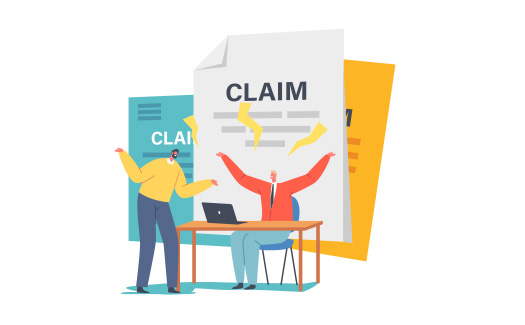 Adjusters, claims managers and their finance colleagues know that the claims process captures a massive amount of data. They also know that, to add real value to the claims process, a claims system must empower end users and management alike to analyze that data. The newest tools available in claims-processing systems (not just in Ventiv’s system, iVOS, but across the technology marketplace) harvest data and present it in a variety of meaningful ways—basically, answering these age-old questions:
Adjusters, claims managers and their finance colleagues know that the claims process captures a massive amount of data. They also know that, to add real value to the claims process, a claims system must empower end users and management alike to analyze that data. The newest tools available in claims-processing systems (not just in Ventiv’s system, iVOS, but across the technology marketplace) harvest data and present it in a variety of meaningful ways—basically, answering these age-old questions:
- Where do we stand right now?
- Where are we headed?
- What does this data mean?
So, what’s new and improved in the newest risk reporting tools? Let’s compare and contrast.
Traditional reporting analyzed information about specific claims; the reports generated included standard claims listing, monthly financial summary reports and examiner listing reports. In other words, traditional reporting provided data on what happened. This kind of reporting often comprised listing data in detailed form, where the user had to scroll through countless entries to get at the data that was meaningful. These kinds of reports can be a good guide to where you stand at the moment, but they do not tell you where you’re going. Understandably, they were often discarded after cursory review.
Today, with the ability to drill down from one report and return more detail, reporting tools can present summary data and let users easily navigate to more detailed data, in the area that they want more information. Not only can we deliver meaningful data, but we can also empower end-users with toolsets that are straightforward, easy to use, and tolerant of limited computer expertise.
In traditional reporting tools, graphical representation of data was simple. There were pie charts and bar charts. Data was also very segmented. People thought of reports as a separate module.
Today, we can use many additional visual aids including scatter charts, heat maps, and multi-dimensional graphs. With dashboarding we can push data out to users, and integrate that data in with their everyday navigation of systems. Ventiv’s newest set of claims reporting solutions allow delivery of aggregated data back to the end users in many different mediums. These include report-like lists, pivot tables, graphs and charts, and a combination of integrated reports within single pages, known as dashboards. They also support the ability to drill down to sub-reports and drill into a claim directly from a report.
Effective reporting starts with good data. Any solution needs to ensure consistent data capture. This will require that the application that captures the data enforces proper required fields and appropriate data values. The Ventiv claims management solution allows our clients to ensure that they are capturing data appropriately. Most important, we allow our clients the flexibility to dictate what data fields are required and which values are valid. In a related vein, data security remains of utmost importance, and our integrated security module allows users to define which data users should see. All security restrictions set in the online claims application are propagated to all integrated reporting solutions.
End users require the ability to deliver meaningful analytics to assist with reserving, predicting lost time, and foreseeing overall claim cost. This is an extremely important area of focus. In these instances, data is harvested from similar losses and can be used to predict what will happen with future claims. Having the ability to use a large enough sample size to evaluate potential losses allows us to manage expectations effectively for future losses. Knowing, within reasonable limits, how much a future claim will cost based on type of loss and type of injury assists all parties of a claim.
Integration with additional toolsets can add to the effectiveness of predicting claims cost. For example, Ventiv has integrated with the Work Loss Data Institute’s Official Disability Guidelines for over a decade. ODG data can be compared to claim loss data. Not only can you predict, with reasonable accuracy, how much a claim will cost for a specific IDC code, but also you can now compare how your company is measuring up against the industry.
Finally, all of these analytic solutions need to be available not only to managers and adjusters of the system, but to insureds, claimants, organizations and any interested party. Jeffrey Goldberg, Novarica’s vice president of Research and Consulting, told me, “When it comes to business intelligence, it’s not just about getting the data, it’s also about getting that data in front of the right users at the point when they need it.”
With the tools today, not only can we get at productivity totals, but also we can drill down from one report to sub reports, to discover the outliers, and address these problem areas. In addition, Mr. Goldberg told me, “Novarica surveys have shown that most insurers focus their data and analytics on pricing and risk assessment, with all other areas far behind. But, especially in workers’ comp, there’s a big need for deeper claims analysis. Having a data strategy in place that covers the entire business and not just the traditional areas of actuarial and underwriting will help insurers compete in a data-driven marketplace.” .
 Stephen Thomas is a senior director, product management and solutions consulting, with Ventiv Technology, based in the New Haven, CT, area.
Stephen Thomas is a senior director, product management and solutions consulting, with Ventiv Technology, based in the New Haven, CT, area.
Contact Stephen by email at stephen.thomas@ventivtech.com.







 Adjusters, claims managers and their finance colleagues know that the claims process captures a massive amount of data. They also know that, to add real value to the claims process, a claims system must empower end users and management alike to analyze that data. The newest tools available in claims-processing systems (not just in
Adjusters, claims managers and their finance colleagues know that the claims process captures a massive amount of data. They also know that, to add real value to the claims process, a claims system must empower end users and management alike to analyze that data. The newest tools available in claims-processing systems (not just in  Stephen Thomas is a senior director, product management and solutions consulting, with Ventiv Technology, based in the New Haven, CT, area.
Stephen Thomas is a senior director, product management and solutions consulting, with Ventiv Technology, based in the New Haven, CT, area. 


